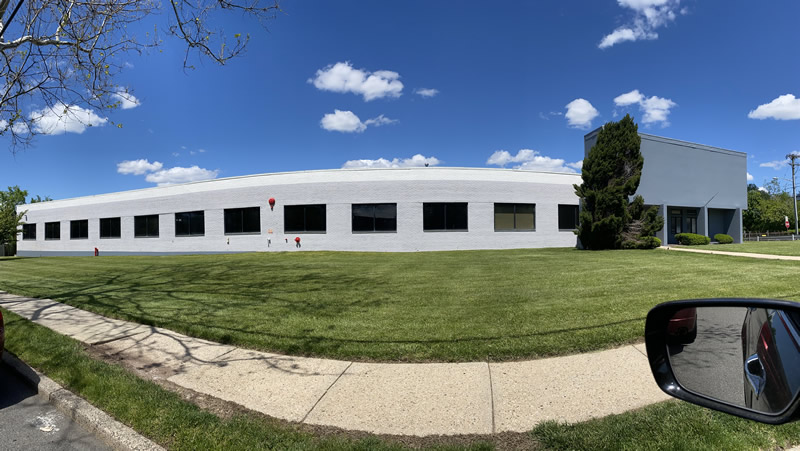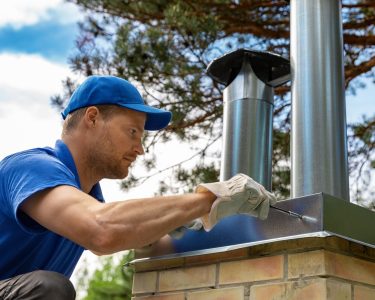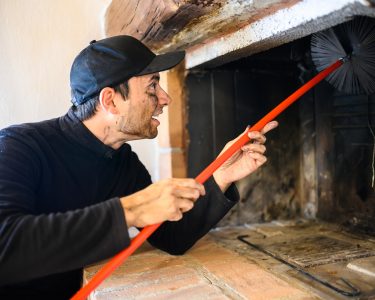Determining the best time of year for painting either the interior or the exterior of a commercial building involves a number of factors. Exteriors, for example, are subject to weather changes such as rain, humidity, and temperature fluctuations.
On the other hand, commercial interior painting depends on different factors such as the type of paint being used. For instance, oil or solvent-based paints will give off fumes, which you don’t want at a time of the year when you can’t comfortably open your windows.
The environment may also affect the timing of your painting project. If you have lots of trees near your building, you might want to finish the job in the spring before the leaves are in full bloom, and the foliage obstructs the painters. Consequently, it always helps to discuss the different variables with your painting contractor to figure out the best time to complete either interior or exterior work.
Painting Commercial Interiors in the Winter
When winter weather curtails outdoor painting projects, many commercial building managers and owners shift their focus indoors. For this reason, winter can be the perfect time for a new coat or touch ups on indoor surfaces.
One thing to keep in mind is that the humidity isn’t always lower in the winter than the summer. This is important because humidity affects how paint adheres to surfaces. A professional painting contractor will know not to paint any surfaces that fall below 35 degrees, which is the minimum temperature at which many specialty paints can be applied and still dry correctly.
It also helps to use low or zero-VOC paints, which don’t produce the kind of fumes that necessitate opening windows. An experienced contractor will know which types of paint to use in colder weather. This is critical for proper application and longer lifespan.
Painting Commercial Exteriors in the Winter
Completing an exterior painting project on a commercial structure in the dead of winter is all about planning. Since most paints won’t adhere to surfaces below 35 degrees, your project will usually depend on the weather forecast. Indeed, when the temperature drops below 35, paint is more likely to crack or chip much sooner. For this reason, painting contractors usually look for 50-degree days to complete their work. It also helps to choose paints which are specially formulated to withstand colder temperatures.
Painting Commercial Interiors in the Summer
One of the big advantages of interior painting in the summer is that you can open windows and get rid of any paint fumes quickly. This is especially important if you must use higher VOC paints, which have fumes that must be aired out. Warmer temperatures will also thin the paint, which makes it easier to apply. It’s also easier to mix than thicker paint.
And warmer weather also results in reduced drying times, which means that multiple coats can be applied in the same day. Therefore, your project will be completed faster.
Painting Commercial Exteriors in the Summer
Summer is usually considered the best time for exterior painting because the days are longer, and the weather is pretty reliable. However, the summer season does have its drawbacks like painting in direct sunlight because the paint won’t have time to cure if it dries too quickly. Also, you won’t be able to paint during rainy days or days when the temperature approaches 100 degrees.
Because paint dries faster in the warm summer air, it’s easy to complete projects that require multiple coats. If painters can apply paint faster in less time, the project will also be more affordable. Even if the exterior paint is thicker because it has more ingredients, the warm air will usually thin it out and make it easy to apply.
Whether your commercial painting project is an exterior or exterior job, the key is to hire an experienced painting contractor who knows how to get the job done right. A professional painter will know which paints work best in warmer or colder temperatures and which paints are right for interior or exterior surfaces.
Whether it’s in the heat of the summer or the dead of winter, a quality painting contractor will plan around the weather forecast to ensure that your paints adhere properly and last for a good long time. By planning your commercial painting project carefully, you can get the best outcome whether it’s a building’s interior, exterior, or both.





